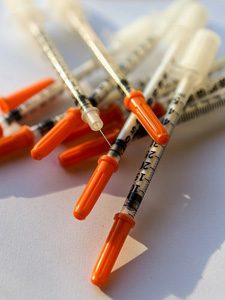
As the opioid crisis has continued to plague the nation, a less-reported story for journalists to consider is the surging number of bacterial and viral infections threatening to make the crisis worse.
The rise includes an increase in bacterial infections caused by Staphlococcus aureus, a pathogen that is often resistant to antibiotics – and a climb in new HIV, hepatitis, sexually transmitted diseases and skin and soft tissue infections.
“A converging public health crisis is emerging because the opioid epidemic is fueling a surge in infectious diseases,” said the Journal of Infectious Diseases in August 2019.
Many individuals with opioid use disorder initially prescribed oral opioids have shifted to injecting prescribed or illicit opioids, and are engaging in high-risk injection practices like sharing syringes and drug paraphernalia.
In 2016, injection drug use was responsible for 13% of new HIV diagnoses and linked to localized HIV outbreaks in Scott County, Ind., Lawrence and Lowell, Mass. More recently, there has been a surge in HIV cases in Cabell County, W.V., one of the states hit hardest by the opioid epidemic.
“This is the nightmare everyone is worried about,” Judith Feinberg, a professor of behavioral medicine and infectious diseases at West Virginia University told Politico, in reference to surging HIV cases.
Nationally, progress on reducing HIV infections has also stalled. There are about 38,000 new HIV infections each year in the U.S., and that number has remained steady over the past five years, after years of large declines, because prevention and treatment aren’t reaching those most at risk, such as intravenous drug users, according to the CDC. There are about 1.1 million Americans living with HIV.
In 2019, the Trump administration announced an initiative to reignite a reduction in HIV infections by focusing resources on counties and states that have the highest HIV rates, and in early December, the administration said it would offer HIV prevention medication (pre-exposure prophylaxis or PrEP drugs) at reduced cost or for free to those at risk of HIV infection.
“Increasing awareness of and access to PrEP is critical,” Jennifer Kates, director of global health and HIV policy for the Kaiser Family Foundation, told Politico.
Other surges in infections related to injectable drug use include a rise in hepatitis A and C cases. The incidence in hepatitis A jumped 140 percent between 2011 and 2017. Hep A is a vaccine-preventable condition that can be transmitted through poor sanitation practices and unprotected sex. The number of new hepatitis C cases, which can be transmitted via unsterile needles, more than doubled between 2010 and 2017, the CDC said. Untreated, hepatitis can cause liver infections and potentially cancer.
Combined cases of the sexually transmitted diseases, syphilis, gonorrhea and chlamydia, reached an all-time high in 2018, said the CDC.
Endocarditis is another opioid-related infection, which involves heart valves. When people share needles, S. aureas bacteria can get into the blood stream and move to the heart, damaging the valves. In the worst cases, a person may need a heart transplant to survive.
For more on this topic, see our new tipsheet “Covering opioids and infectious diseases.” Please also join us in Austin in May for our annual Health Journalism 2020 conference, where there will be a panel discussion on the opioid crisis and infectious diseases.








